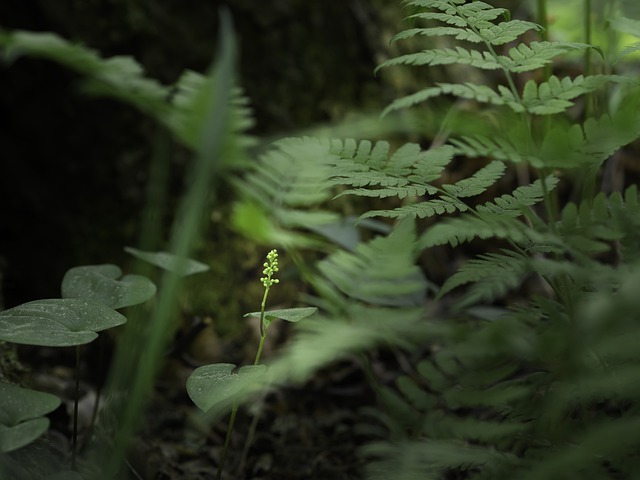 |  |  |   |  |
 |  |
May Lily is a perennial plant, 10-15 cm tall (rarely up to 20 cm), with a thin, creeping and branched root and an upright stem. Until the plant has started to flower, it has only one leaf. Flowering produces 2-3 leaves (more often 2), simple, alternately arranged, on short stems, with smooth edges, with a wide heart-oval leaf plate (3-6cm in length and 2-4 in width). The flowers are small (3-5 cm in diameter), white, bisexual, arranged in a dense cluster at the end of the stem.
Fruits - berries, cherry red (up to 3 mm in size), with 1-2 seeds. Blooms in May-June.
The above-ground part of the plant (stalks) is used for medicinal purposes. The plant is harvested during flowering, in dry and warm weather. The leaves are cut with secateurs one at a time. The leaves are spread out in a 3-4 cm thick layer and neatly dried. Drying is carried out in warm rooms or forced dryers not exceeding 45C.
The underground part (after vegetation) and ripe fruits are also collected less often. The fruits and roots are dried in a generally accepted way.
It is worth knowing that even though the two-leafed thistle is widely distributed, it is slowly but surely disappearing from the world. And in the future it will also become defensible. Therefore, when harvesting this plant, it is important not to damage its stems and flower stalks.
Cardiac glycosides (dutheolin-7-glucoside, apigenin-7-glucoside), saponins, coumarins, complex esters, organic acids and ascorbic acid-vitamin C (in the leaves) have been found in the double-leaved milk thistle. Agrimonin, tannic acids in large quantities, a little essential oil, vitamin K, etc. are also found in milkweed. Catecholin (<8%), agrimonol, agrimonolide is obtained from the roots of the two-leaved thistle.Medicinal significance
May Lily has anti-inflammatory, fever-reducing, pain-relieving, hemostatic, tonic, diuretic and astringent properties.
Experiments have shown that agrimonin stimulates cell growth, enhances blood clotting and increases arterial pressure, and also enhances breathing. It also relaxes the muscles of the uterus and lowers blood sugar.
In folk medicine, effective remedies are prepared from leaves, leaves, roots, and rarely from berries, which are used to treat various diseases. For example, various heart diseases, kidney, upper respiratory diseases, as well as edema are treated with the setting of this plant and it is even used as a tonic. The setting is used to treat flu and colds, especially when there is a high temperature. In folk medicine, the setting is also used orally in cases of "leg weakness".
The leaves are boiled and drunk as tea - people believed that this tea gives strength and relieves fatigue. Decoctions are recommended for the treatment of joint diseases, the prevention of nail beds and the treatment of skin tumors. A decoction of the roots of thistle is used as a hemorrhaging agent and tonic for bloody vomiting, uterine and epistaxis, as well as to treat irregular menstrual cycles and leucorrhoea.
Applications of dry and fresh, crushed leaves make a softening and absorbent agent for the treatment of abscess, bruises, tumors, panaritis. In addition, eye inflammation (conjunctivitis) is also treated with this plant.